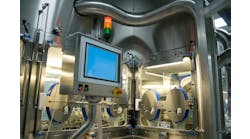Within the packaged foods industry, the jury is still out on whether more SKUs (stock keeping units) is a good thing or a bad thing. "Product proliferation is an unavoidable — and in many respects laudable — byproduct of the global trend toward more efficient manufacturing and distribution," says Leonard Sahling, vice president of research for ProLogis (www.prologis.com), a provider of distribution facilities and services. "At the same time, it can wreak havoc on a smooth-running supply chain."
According to a study undertaken by ProLogis, for too many companies, product proliferation has become the "scourge of lean supply chain operations." The greater the number of SKUs, the harder and costlier it is for companies to sell, plan, track, manufacture, ship and deliver those units. What's more, the industry has been historically plagued by an error rate in forecast accuracy of about 50%.
At Campbell Soup Co. (www.campbellsoup.com), for instance, "People used to get their heads handed to them" if they missed their numbers, explains Mike Mastroianni, vice president, North America, planning and operations support. Human nature being what it is, Campbell's personnel tended to over forecast. The problem is, when that happens, inventories are driven up, as well as the costs of obsolescence, warehousing, expedited shipping, and everything else that is affected when forecasts are overly optimistic.
At Campbell's, manufacturing was king, explains Mastroianni, due to the fact that many of the people working in the manufacturing department had several decades of seniority as well as a long-range perspective on how the food marketplace tends to fluctuate. Hired in 2001 to oversee the soup maker's sales and operations planning (S&OP) effort, Mastroianni set out to realign the supply chain to make it easier to introduce new products. For that kind of realignment to succeed, meant that Campbell's had to drastically improve its forecast accuracy.
For its forecasts, Campbell's takes a traditional S&OP consensus process. "We triangulate between sales, marketing and our demand planning organization with various inputs at different levels," Mastroianni states. "We use macro economics — advertising, weather trends, competitive data, things of that nature. We collect very granular trade promotional data. We capture insight from the sales organization, such as Wal-Mart's new store growth, distribution changes, and information from different channels. And then we'll bring in an enhanced statistical point of view from demand planning that looks at history as well as the insights that we get from sales and marketing."
The sales, marketing, and demand planning teams get together to reconcile on a number they can all agree on. That forecast number ultimately ends up going to the general manager for endorsement. "It is truly a consensus, one set of numbers, 'set' being the operative word," Mastroianni notes. "You align around the most likely number, but you have visibility to both the high side and the low side. That is truly a best practice."
Even after all of that consensus planning, the odds are pretty good you're not going to hit that number, Mastroianni continues. That makes it all the more important that a company has a system of open and ongoing dialogue in place. "You need to be asking questions like: If a competitor does X, here's what could play out, and would we do anything differently? Maybe we'd put more inventory-into the mix to chase that demand."
Campbell's put key performance indicators (KPIs) in place to hold people accountable, as well as to measure improvements in forecast accuracy. The company has more than 1,000 different products which are distributed out of four different locations, and Campbell's forecasts product demand at each of those four locations. As a result, the company is forecasting roughly 4,500 demand forecasting units, adding 250 new units every year.
Mastroianni's team turned to a realtime forecasting solution from Terra Technology (www.terratechnology.com) that is capable of creating daily, shortterm forecasts with 52 weeks of live data. "The sweet spot is something called forecast consumption logic," he says. "It's one thing to have a monthly forecast, but what do you want the system to do on a daily basis as that forecast becomes consumed by orders?" Seeking answers to that question, Campbell's implemented a planning system capable of running "what if?" scenarios every night based on the latest information fed into it from the company's order management system. The forecast demand signal is then adjusted accordingly and sent out to the plants.
Being able to forecast in real-time allows Campbell's to track patterns that used to go undetected. The system might say, for instance, "Forget the order today as it relates to your forecast. You need to be thinking about the next seven to 14 days because, based on this current pattern, your next month is going to look like this," notes Mastroianni. "Or it might say, 'You're holding on to a forecast that isn't going to happen. So let it go, and produce to this lower number.'"
Campbell's has improved by as much as 50% the weekly accuracy of the item level signals sent to its manufacturing plants. To those who say, "So what? A week is too late," Mastroianni points out that Campbell's enjoyed an immediate benefit on Day One on the replenishment from its plants to its distribution centers. "Think about it: You're sending trucks to your distribution centers every day based on that accuracy. So if you're sending the wrong products out, then guess what — you've got to follow it up with more trucks, and you're going to end up with more inventory forward. For us, especially during soup season [winter], getting the right trucks out is absolutely critical." That increased level of accuracy has also paid off by reducing how often Campbell's has to use expedited shipping to make up for not having the right products at its customers at the right time.
The company has also leveraged its improved forecast accuracy to provide improved visibility to its warehouses and manufacturing plants. Being able to plan long-range also allows Campbell's to pre-buy transportation with some of its carriers.
Today, states Mastroianni, if any problem comes up, everybody knows how to communicate the implications to the right people. "It makes me sleep real good at night," he says. "It's no fun getting your head handed to you."



